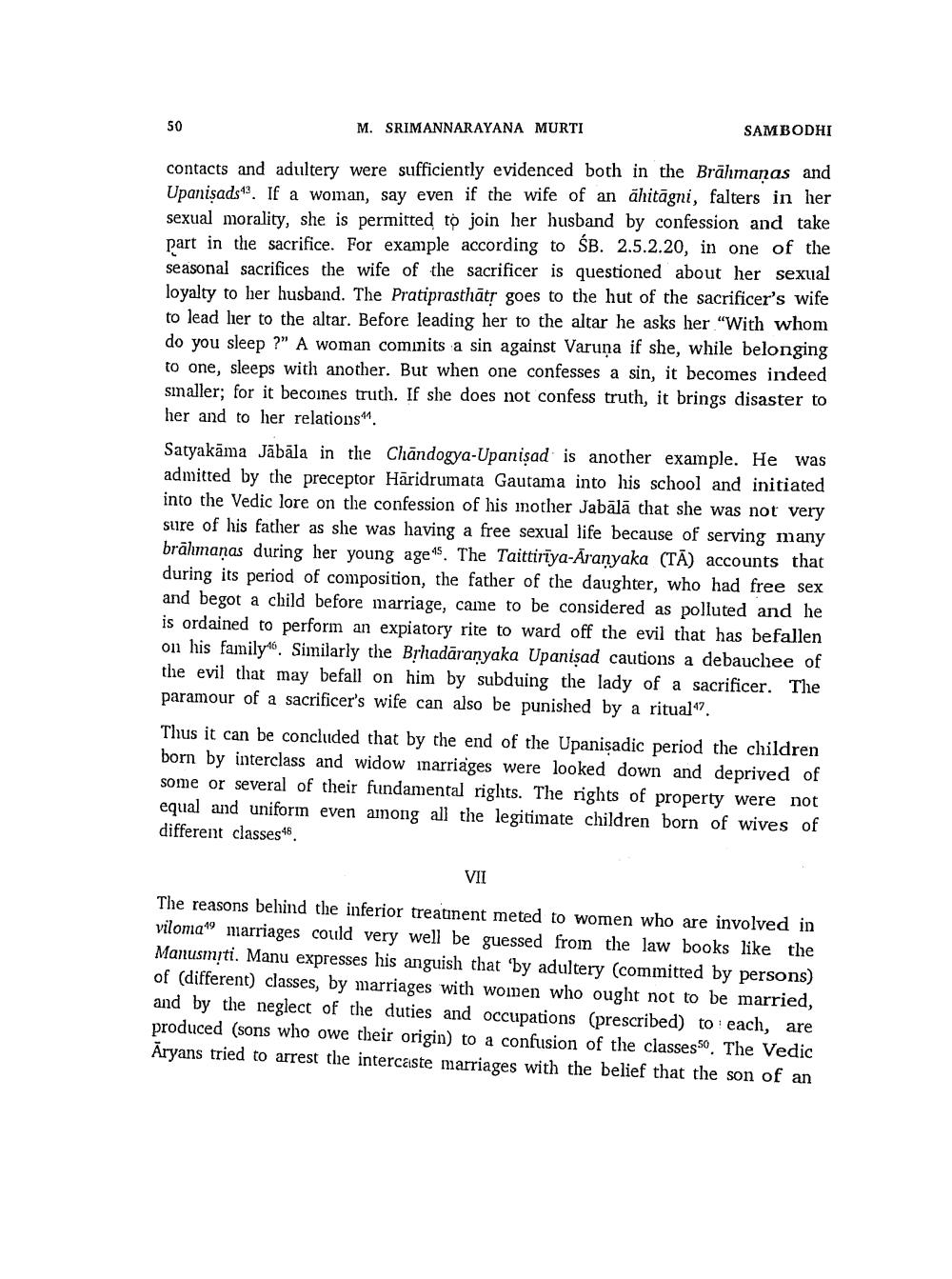________________
M. SRIMANNARAYANA MURTI
SAMBODHI
contacts and adultery were sufficiently evidenced both in the Brāhmanas and Upanişads". If a woman, say even if the wife of an ähitāgni, falters in her sexual morality, she is permitted to join her husband by confession and take part in the sacrifice. For example according to ŚB. 2.5.2.20, in one of the seasonal sacrifices the wife of the sacrificer is questioned about her sexual loyalty to her husband. The Pratiprasthāts goes to the hut of the sacrificer's wife to lead lier to the altar. Before leading her to the altar he asks her "With whom do you sleep?" A woman comınits a sin against Varuņa if she, while belonging to one, sleeps with another. But when one confesses a sin, it becomes indeed sinaller; for it becoines truth. If she does not confess truth, it brings disaster to her and to her relations Satyakāma Jābāla in the Chandogya-Upan işad is another example. He was admitted by the preceptor Haridrumata Gautama into his school and initiated into the Vedic lore on the confession of his mother Jabālā that she was not very sure of his father as she was having a free sexual life because of serving many brālımanas during her young age". The Taittirīya-Aranyaka (TA) accounts that during its period of composition, the father of the daughter, who had free sex and begot a child before marriage, came to be considered as polluted and he is ordained to perform an expiatory rite to ward off the evil that has befallen on his family. Similarly the Brhadāranyaka Upanisad cautions a debauchee of the evil that may befall on him by subduing the lady of a sacrificer. The paramour of a sacrificer's wife can also be punished by a ritual"? Thus it can be concluded that by the end of the Upanisadic period the children born by interclass and widow marriages were looked down and deprived of some or several of their fundamental rights. The rights of property were not equal and uniform even among all the legitimate children born of wives of different classes
VII
The reasons behind the inferior treatinent meted to women who are involved in viloma“9 marriages could very well be guessed from the law books like the Manusmīti. Manu expresses his anguish that 'by adultery (committed by persons) of (different) classes, by marriages with women who ought not to be married, and by the neglect of the duties and occupations (prescribed) to each, are produced (sons who owe their origin) to a confusion of the classes 50. The Vedic Aryans tried to arrest the intercaste marriages with the belief that the son of an
committed by persons)
and by the neglect of manages with women who




